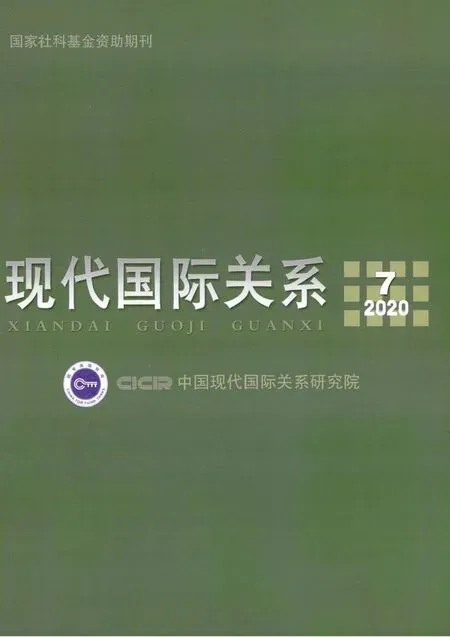Abstracts
TheUS“Whole-of-Government”StrategytowardChina
ChenWenxin
Abstract: The United States “whole-of-government” (WOG) strategy toward China is entering the stage of full mobilization and implementation. From the perspective of the use of WOG in the United States, what the concept highlights is comprehensiveness and integrity. It is not limited to the government, but could include the society; it is also not limited to the government of one country, but could include the governments of the country’s allies and partners. The goal of WOG strategy is to seek strategic consensus. The US WOG strategy toward China takes a ferocious way and is not good for US-China relations. However, its full implementation also faces restrictions.
Keywords: whole-of-government, US-China relations, strategic competition
USStrategytowardsChinaamidGlobalPublicHealthCrisis
WangDa
Abstract: Among the three widely used expressions of the US strategy of competing against China, “decoupling”, “competitive coexistence” and “new Cold War,” it is generally believed that “decoupling” is closest to the intention and essence of Trump administration’s strategy towards China. Although the competitive China strategy has a certain basis of consensus between the two parties, all parties have different understandings of its connotation. The global public health crisis has exacerbated this cognitive divergence. China should make good preparations for the continued pressure from the United States, especially the possible “hard decoupling” of the Sino-US economy. Strengthening cooperation instead of “decoupling” in global public health “soft security” should be the correct option for the US government’s strategy toward China.
Keywords: public health crisis, US-China relations, competitive strategy, decoupling
PoliticalRhetoricandPolicyLegitimacyinTrump’sTwitterPresidency
WangLiliandZhangwenxiao
Abstract: During the Sino-US trade war, US President Donald Trump used tweets to persuade voters effectively. On Twitter, he constructed the “emergency state” of “Sino-US trade is damaging the interests of the United States” and used rhetorical strategies such as emotional mobilization, illusion shaping and resorting to others. The intensification of the Sino-US trade war is the result of mutual shaping and joint action by Trump and the voters. Political polarization, populism and social media constitute the soil for the successful implementation of Trump’s political rhetoric. China should comply with the characteristics and needs of the audience in the era of social media, comprehensively plan the strategy of international public opinion, change the passive response situation in Sino-US public opinion, and create certain public opinion soil and air for the construction of Sino-US competitive partnership.
Keywords: Sino-US trade war, political rhetoric, twitter presidency, Trump
BehavioralLogicofIndia’sToughDiplomacytowardChina
HuShishengandWangJue
Abstract: The Galwan conflict has brought Sino-Indian relations to their lowest point since the 1962 border war. Although the breakout of the conflict itself is obviously accidental, it is also an inevitable result of New Delhi’s persistent practice of its “Forward Policy” in the frontier region. In addition to the immediate considerations of seeking revenge to the casualties suffered by the Indian patrolling forces in the Galwan conflict, there is also a variety of deeper logic behind the successive tough policies against China in the first half of this year. This conflict has proved once again that the current framework is less effective in framing the bilateral relations. How to coexist stably and peacefully between two emerging neighboring powers has become a challenge urgently needed to be addressed by the two governments. It is time to reframe China-India relations.
Keywords: the Galwan conflict, China-India relations, India’s diplomacy, Modi administration
US-IndiaInteractiveRelationsundertheIndo-PacificStrategy
DaiYonghongandZhouYupeng
Abstract: In the context of the Indo-Pacific strategy, the interaction between the US and India has shown new trends. On the one hand, the strategic integration between the two sides has deepened. The United States has repeatedly mentioned the importance and particularity of India. The intention of the two countries to check and balance China coincides. After Modi started his second term, India’s attitude towards the Indo-Pacific strategy has changed significantly, and its participation has gradually increased. On the other hand, the interaction between the two countries has become closer. The Sino-Indian border conflict has promoted the development of strategic partnership between the two sides. The defense cooperation and security interaction have been further strengthened. Selective cooperation is also the main development trend in the future. However, the two sides have differences in the strategic positioning and objectives of Indo-Pacific.
Keywords: Indo-Pacific strategy, US-India interaction, power relation, regional security
(Edited by Zhang Yimeng)

